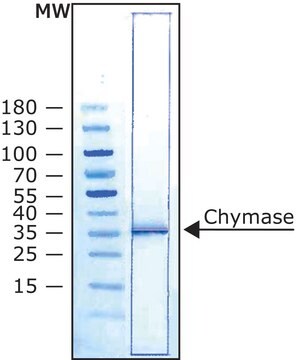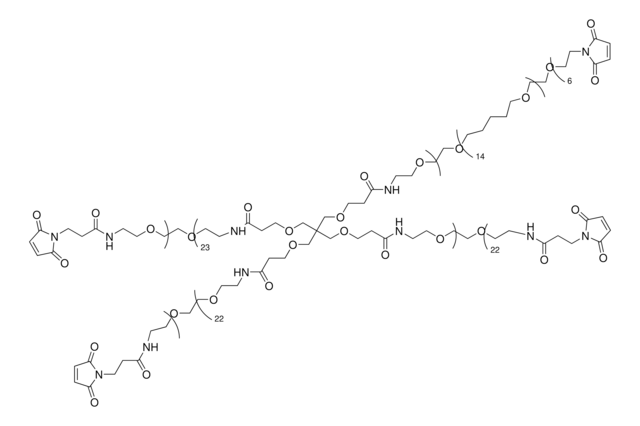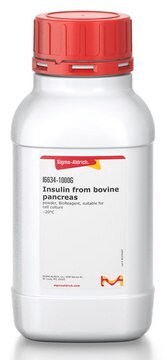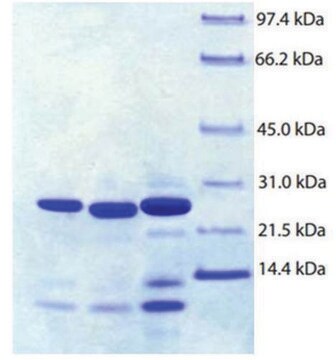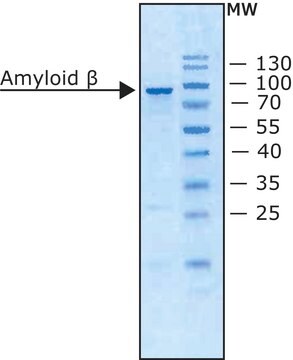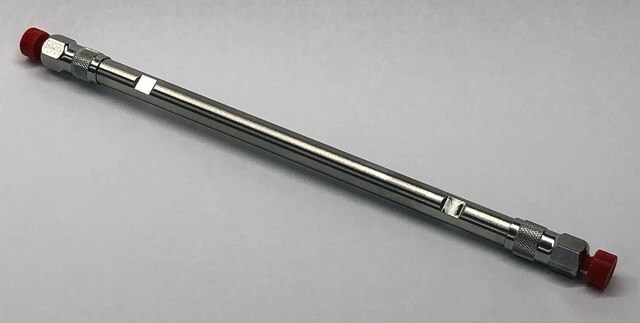RAB1754
Human Tryptase beta-2 ELISA
for serum, plasma and cell culture supernatants
Faça loginpara ver os preços organizacionais e de contrato
About This Item
Código UNSPSC:
41116158
NACRES:
NA.32
Produtos recomendados
reatividade de espécies
human
embalagem
kit of 96 wells (12 strips x 8 wells)
técnica(s)
ELISA: suitable
entrada
sample type serum
sample type cell culture supernatant(s)
sample type plasma
assay range
inter-assay cv: <12%
intra-assay cv: <10%
sensitivity: 2 ng/mL
standard curve range: 2.048-500 ng/mL
método de detecção
colorimetric
Condições de expedição
wet ice
temperatura de armazenamento
−20°C
Informações sobre genes
human ... TPSB2(64499)
Descrição geral
Tryptase β2 (TPSB2) gene codes for mast cell tryptase β2. It is expressed in whole blood by mast cells and their progenitors. Mast cell βII-tryptase protein is a S1A protease.
Aplicação
For research use only. Not for use in diagnostic procedures.
Please refer to the attached Protocolfor details.
Please refer to the attached Protocolfor details.
Ações bioquímicas/fisiológicas
Tryptase β2 (TPSB2) can break down the large fibronectin substrate into multiple, smaller peptides ranging in size from approximately 30 to 50 kDa. It can also cleave fibrinogen. TPSB2 is associated with pathological inflammation.
Outras notas
A sample Certificate of Analysis is available for this product. Please type the word sample in the text box provided for lot number.
Palavra indicadora
Warning
Frases de perigo
Declarações de precaução
Classificações de perigo
Met. Corr. 1
Código de classe de armazenamento
8A - Combustible corrosive hazardous materials
Ponto de fulgor (°F)
Not applicable
Ponto de fulgor (°C)
Not applicable
Escolha uma das versões mais recentes:
Já possui este produto?
Encontre a documentação dos produtos que você adquiriu recentemente na biblioteca de documentos.
S A Brooks et al.
Animal genetics, 41 Suppl 2, 16-22 (2010-11-26)
Inflammatory damage to the digital laminae, a structure responsible for suspension of the distal skeleton within the hoof capsule, results in a painful and often life-threatening disease in horses called laminitis. There can be many diverse causes of laminitis; however
Nossa equipe de cientistas tem experiência em todas as áreas de pesquisa, incluindo Life Sciences, ciência de materiais, síntese química, cromatografia, química analítica e muitas outras.
Entre em contato com a assistência técnica